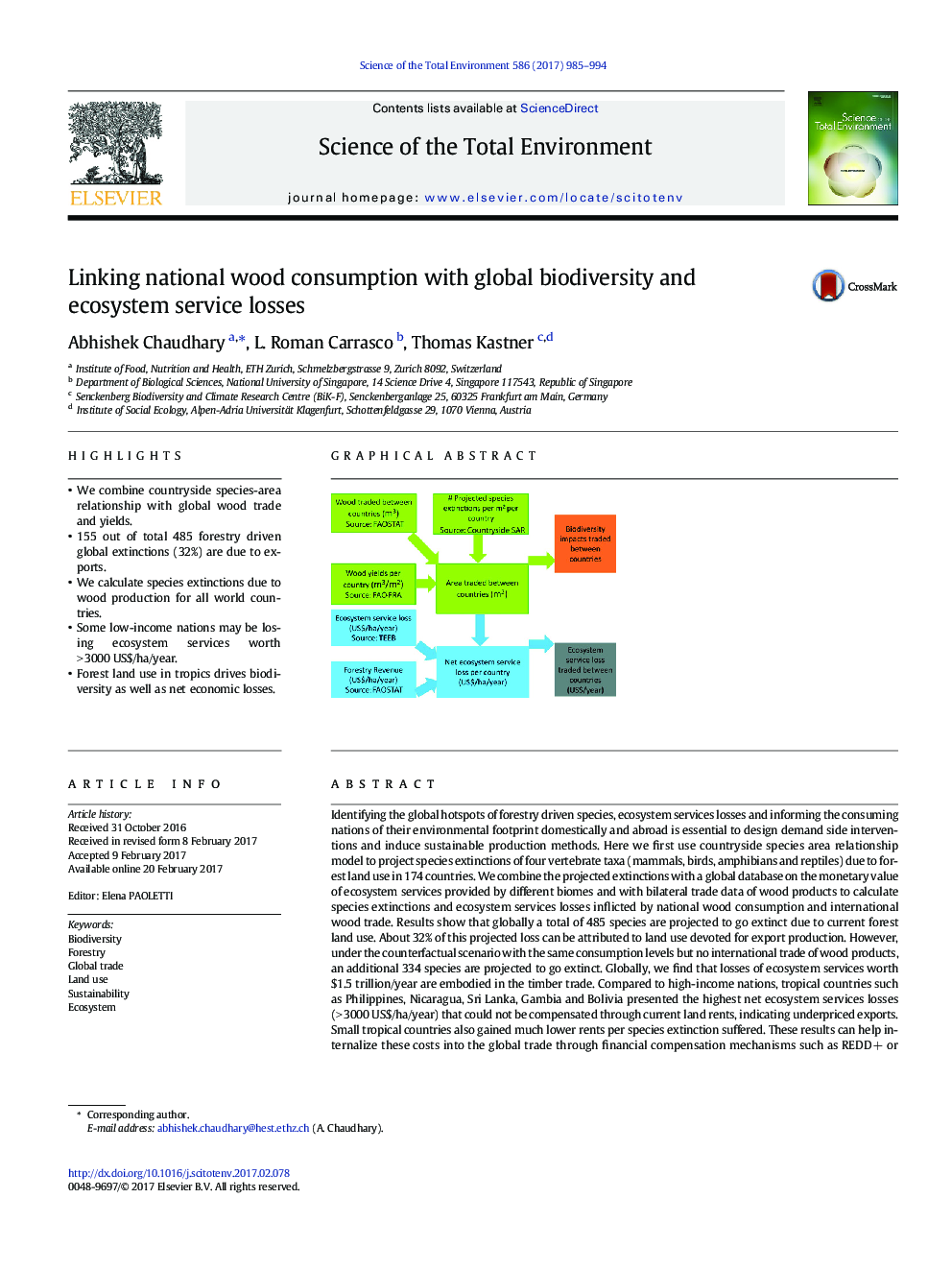| کد مقاله | کد نشریه | سال انتشار | مقاله انگلیسی | نسخه تمام متن |
|---|---|---|---|---|
| 5751190 | 1619707 | 2017 | 10 صفحه PDF | دانلود رایگان |
- We combine countryside species-area relationship with global wood trade and yields.
- 155 out of total 485 forestry driven global extinctions (32%) are due to exports.
- We calculate species extinctions due to wood production for all world countries.
- Some low-income nations may be losing ecosystem services worth >Â 3000Â US$/ha/year.
- Forest land use in tropics drives biodiversity as well as net economic losses.
Identifying the global hotspots of forestry driven species, ecosystem services losses and informing the consuming nations of their environmental footprint domestically and abroad is essential to design demand side interventions and induce sustainable production methods. Here we first use countryside species area relationship model to project species extinctions of four vertebrate taxa (mammals, birds, amphibians and reptiles) due to forest land use in 174 countries. We combine the projected extinctions with a global database on the monetary value of ecosystem services provided by different biomes and with bilateral trade data of wood products to calculate species extinctions and ecosystem services losses inflicted by national wood consumption and international wood trade. Results show that globally a total of 485 species are projected to go extinct due to current forest land use. About 32% of this projected loss can be attributed to land use devoted for export production. However, under the counterfactual scenario with the same consumption levels but no international trade of wood products, an additional 334 species are projected to go extinct. Globally, we find that losses of ecosystem services worth $1.5Â trillion/year are embodied in the timber trade. Compared to high-income nations, tropical countries such as Philippines, Nicaragua, Sri Lanka, Gambia and Bolivia presented the highest net ecosystem services losses (>Â 3000Â US$/ha/year) that could not be compensated through current land rents, indicating underpriced exports. Small tropical countries also gained much lower rents per species extinction suffered. These results can help internalize these costs into the global trade through financial compensation mechanisms such as REDDÂ + or through price premiums on wood sourced from these countries. Overall the results can provide valuable insights for devising national strategies to meet several of the global Aichi 2020 biodiversity targets and can also be useful for life cycle assessment and product labelling schemes.
232
Journal: Science of The Total Environment - Volume 586, 15 May 2017, Pages 985-994
